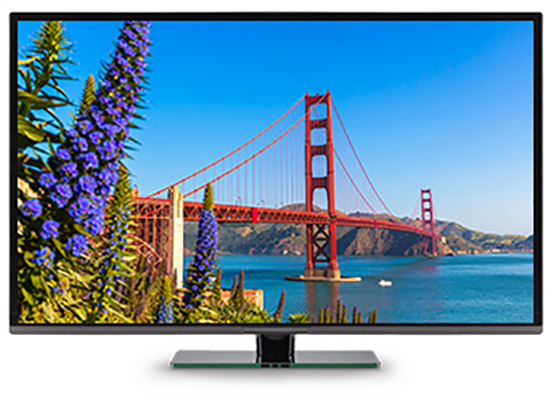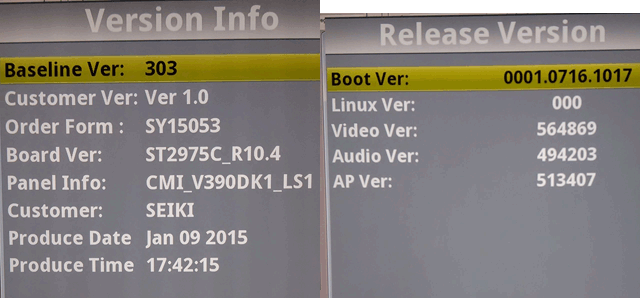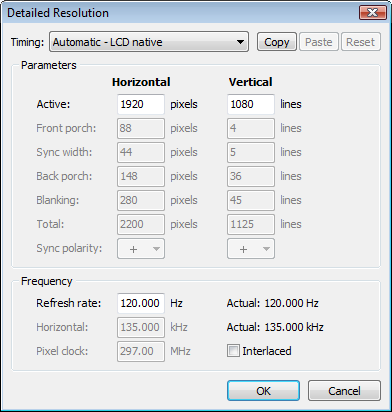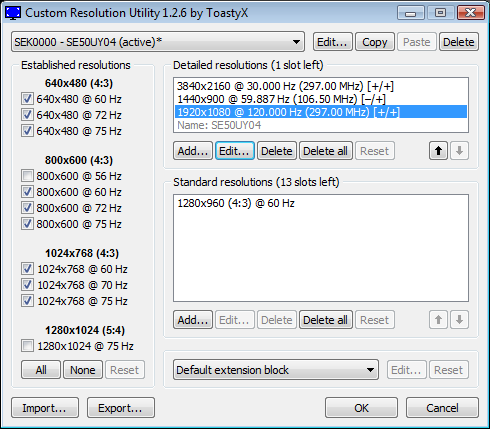Introduction: The Seiki 39″ LED HDTV with 4K @ 30Hz support and true 120Hz support @ 1080p!
I had been looking into buying a big screen monitor/TV for my PC and settled on this one which can do 4K but at 30Hz. It runs 1080p @ 60-120Hz nicely from a DVI situation adapted to HDMI where audio is separately delivered by analog means, a feature that’ll be more rare in the future, as well as providing a VGA input port (extremely rare now). I think I’m pretty happy with it and ultimately scored it for a total of $211! With an extra $25 I threw in for a new videocard, my HDMI output now includes digital audio, so it behaves much better with any HDTV and no special mixing required! 1080p @ 120Hz is REALLY beautiful on this TV and likely will be the reason I keep it!
http://www.microcenter.com/product/451211/39_(Refurbished)_LED_4k_Ultra_HDTV
http://www.seiki.com/content/39-se39uy04-led-ultra-hdtv

Mission Accomplished! Seiki came through and emailed me back with the firmware today. The back’n’forth wait with them took about 4-5 days, and as I mentioned, I bought another one by the time they got back to me which had the 2015 firmware daveo said he received.
Well, I almost didn’t feel like it as I had the first TV with the 2014 firmware boxed up to return for a refund, but I decided to install what they gave me for testing purposes and just for the heck of it so whoever rebuys it will be up-to-date.
So, yeah, confirmed, what they gave me is same Jan 09 2015 firmware, thus I’m presuming this is likely the final version the SE39UY04 model will receive, so for those of you that wanna upgrade, here ya go!!! 🙂
My download link for backup (with ReadMe/instructions):
1) http://mediafire.com/download/…/Seiki-SE39UY04-FinalFirmware-Jan-09-2015.zip
Original from Seiki – no idea how long it’ll last:
So, after upgrading with this install.img, your service menu should show you this:

As my new, 2nd TV already shipped with this same version, I didn’t need it since they had nothing newer, but I hope it will be helpful to others so have it also!
***************************************************************
One last ProTip: Fixing the random blanking problem.
In a previous post, I mentioned how I solved my blanking problem with this TV when I activated 1920×1280 @ 120Hz with my computer. I felt I should repeat that info should it be helpful to others.
This applies when using the Custom Resolution Utility to output 1080p at a glorious 120 Hz instead of 60 Hz… This TV/monitor is beautiful once you can get it to 120 Hz, that’s for sure!!!
So, here’s what I did wrong: In trying to create a custom resolution/refresh profile for my Radeon 5450 video card using ToastyX’s CRU 1.2.6, I selected the first option under Timing which was “LCD standard.” However, this was not ideal with the Seiki 39″ and would occasionally cause blanking regardless of the firmware I later realized…
The fix: I edited the profile and tried the 2nd option “LCD Native” which defaults to a perfect/even 120.000 Hz (instead of 120.003 Hz) for the vertical refresh rate, and 135.000 kHz, etc. In the end, the profile should be listed as “1920×1080 @ 120.000 Hz (297.00 Mhz)” – you want even values, no fractions, e.g. 120.003, etc.!
So, if you’re having this problem and you created your own profile to force the option of 1080p @ 120 Hz, you might try checking that profile again.
So yeah, that’s how I fixed the blanking problem, the settings for the custom creation of a new 120Hz resolution were not quite right… Don’t blame the TV just yet or the HDMI wire, although you’d want a quality, heavy gauged cable and not the el cheapos to rule the connection out. I changed firmware multiple times before having another look and realizing it was something as simple as this!
Your 1080p @ 120Hz profile should like exactly like these screenshots and that’s what totally eliminated the blanking problem for my TV:


If you have an Nvidia card, you can use its proprietary driver software to set up a custom resolution so it’d be different then, but just make sure the 120 Hz is an even 120.000 Hz and the horizontal is an even 135.000 kHz, etc. As long as the clock limit doesn’t go over 300 Mhz, the 120 Hz resolution should appear in the Windows control panel app or your video card’s driver software. For 1080p, if you did it right, the clock limit should be a perfect 297.000 Mhz as shown.
P.S. Follow this whole guide below if you’ve never done this before as you’ll need to patch your AMD/Radeon or Nvidia drivers to get 120 Hz going: